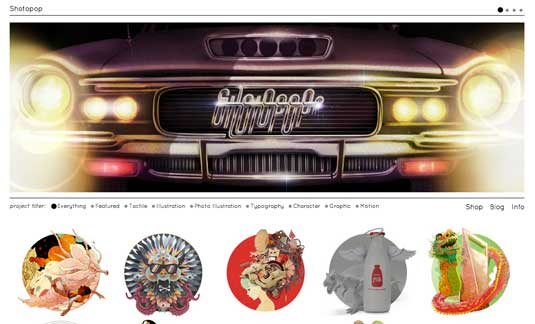best dance studio website design
10 ways to make your design studio more productive
We all want our design agency to be super-successful, but no one wants to spend all day and all night in the office. Yet creating a greater volume of design work isn't about working harder, it's about working smarter. Here we've spoken to a range of leading designers and gathered together their best advice...
- Read all our agency-related posts here
01. Create a system

Work smarter, not harder," advises Jeff Knowles at The Planning Unit. "When a project first comes in, design it with a system in mind and create something that can easily be populated across various applications and collateral. This way, when each new element comes in you can produce it efficiently to a high standard. If you design each piece from scratch each time, it's not going to be as profitable.
02. Stick to your strengths
When it come to tight budgets and timescales, call on the skills and solutions that you know you can do well," continues Jeff Knowles. "To quote Paul Rand: 'Don't try to be original, just try to be good.' Keep it simple and avoid laborious processes. One of the most time-consuming things you can do is try to find new and pioneering styles and solutions. Save all that for the well-paid projects. For all others, just stick to your strengths.
03. Look after your staff

Managing staff might appear straightforward, but it's the one area that can make or break a business," proposes Mainframe's Adam Jenns. "The Worker's Plea is a great guide: 'Tell me clearly what you expect of me. Give me the opportunity and resources to perform. Let me know how I'm getting on. Provide me with guidance, training and support when I need it. Reward me according to the contribution I make to the business'.
04. Understand your client

Try to get a good brief from the client, although it does seem to be getting harder these days," admits Neil Roddis at Fluid Design. "Knowing the needs of your client is a must. Until you know what they require from a design, your solution might not be focused enough. Get ideas sketched out early: this could save you hours or even days of time. If the client doesn't like a route, there's absolutely no point pursuing it.
05. Plan for contingencies
It's all in the planning. Profit often gets lost because a brief subtly changes over time," warns Nat Hunter, co-director of Design at RSA. "Even seemingly rock-solid deadlines can slip, and then you're working for another week on the same budget; or content from the client may come in late, so you're twiddling your thumbs. Always factor in contingency: if you think it'll take six weeks, make it seven. Otherwise, if you get the flu, you're in big trouble.
06. Keep your schedule up to date

Schedule everything, and keep tracking your time," suggests Casper Franken at Shotopop. "We all sit down at least three times a week to update our schedule and see where we're gaining or losing time. That way, you are able to tell clients confidently when they can expect to see things. And always let other people do the bits that confuse you: expenses, invoices, tax, payroll, insurance and legal business can be daunting if you think only in pictures, like I do.
07. Focus on the business side
From day one, be as passionate about the business side as you are the design," is the manifesto of ustwo's Matt Miller, better known simply as mills. "If you can't do this, then you're just a designer - not a business owner. Your team is the sole reason your business does well, and if you can't handle the pressure of looking after and leading humans who have emotions and needs, then quit and become a freelancer."
08. Know the consequences

It can take years to build up a solid job-flow protocol, from initial quoting through to post-project debriefs," reasons Dan Moore at Studio Output. Getting a reliable system in place for every stage of the process is crucial: "The main thing to do is make sure that everyone - you, the client and any contractors - is aware of deadlines, deliverables and responsibilities and, above all, what the consequences are for the overall job when one of these factors isn't met."
09. Watch your budget
Always have systems in place to catch jobs that are running considerably over, so they can be re-quoted early enough," advises Neil Roddis. "Late quotes or increased invoices annoy clients, and there are always problems asking for extra budget after the work is completed. Branding work is often easier: once the key elements have been created it's just a case of rolling them out. Delivery tends to be quick, on time and on budget, which makes life much easier when quoting."
10. Start small (but think big)

If an idea is strong enough, it's easy to build upon later: it's always better to start off small and grow, than to start too big and be unable to scale it back," believes Matt Clugston at Clusta, who encourages his staff to use any studio downtime to explore exciting new approaches and technologies. "Often," he continues, "we'll have a spark of an idea that will work really well for an existing client".
Related articles
best dance studio website design
Source: https://www.creativebloq.com/10-ways-make-your-design-studio-more-productive-111155
Posted by: lawsontrory1966.blogspot.com

Always so interesting to visit your site.What a great info, thank you for sharing. this will help me so much in my learning Website Designers
ReplyDeleteI am upbeat to locate your recognized method for composing the post. Presently you make it simple for me to comprehend and execute the idea. Much obliged to you for the post. Backlink strategy
ReplyDelete